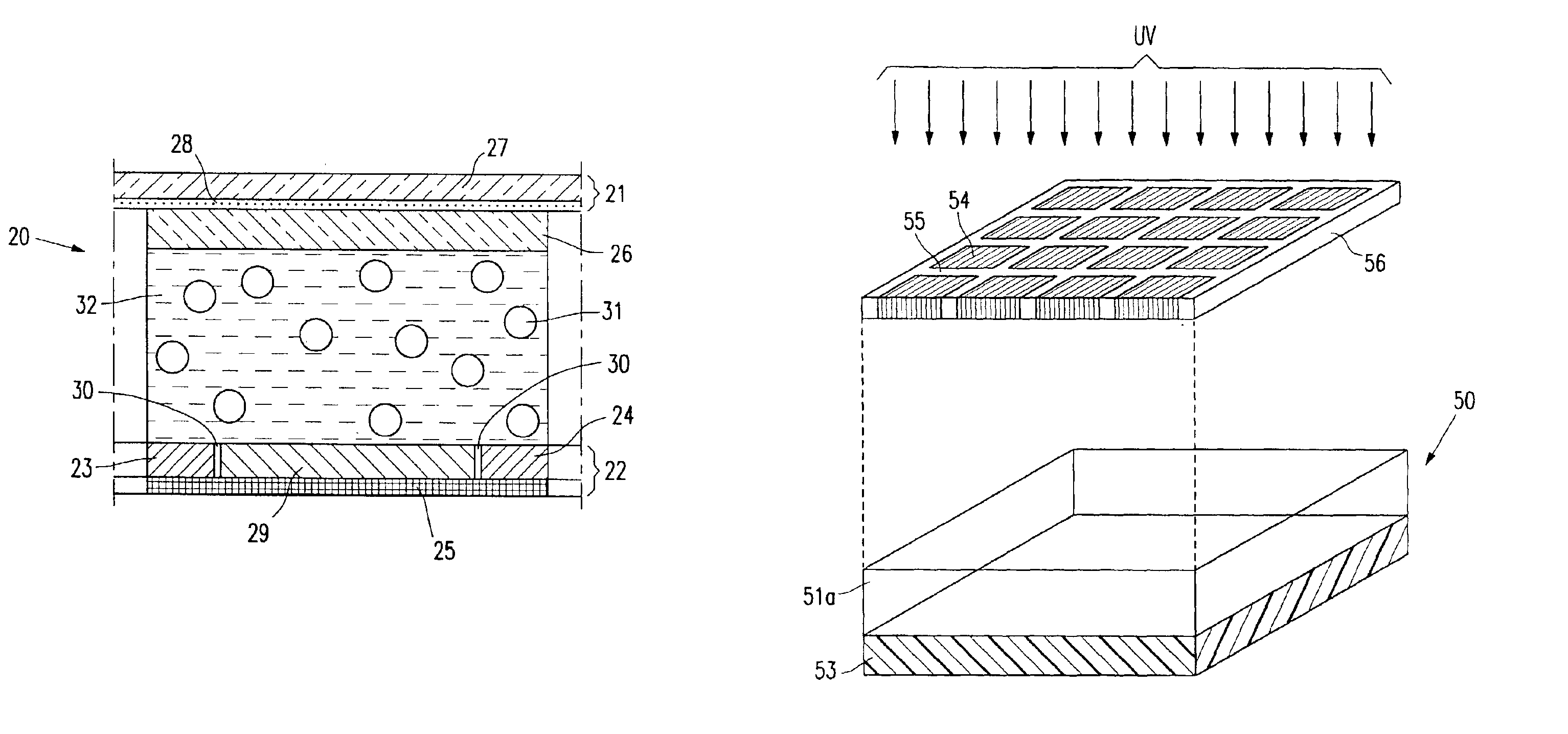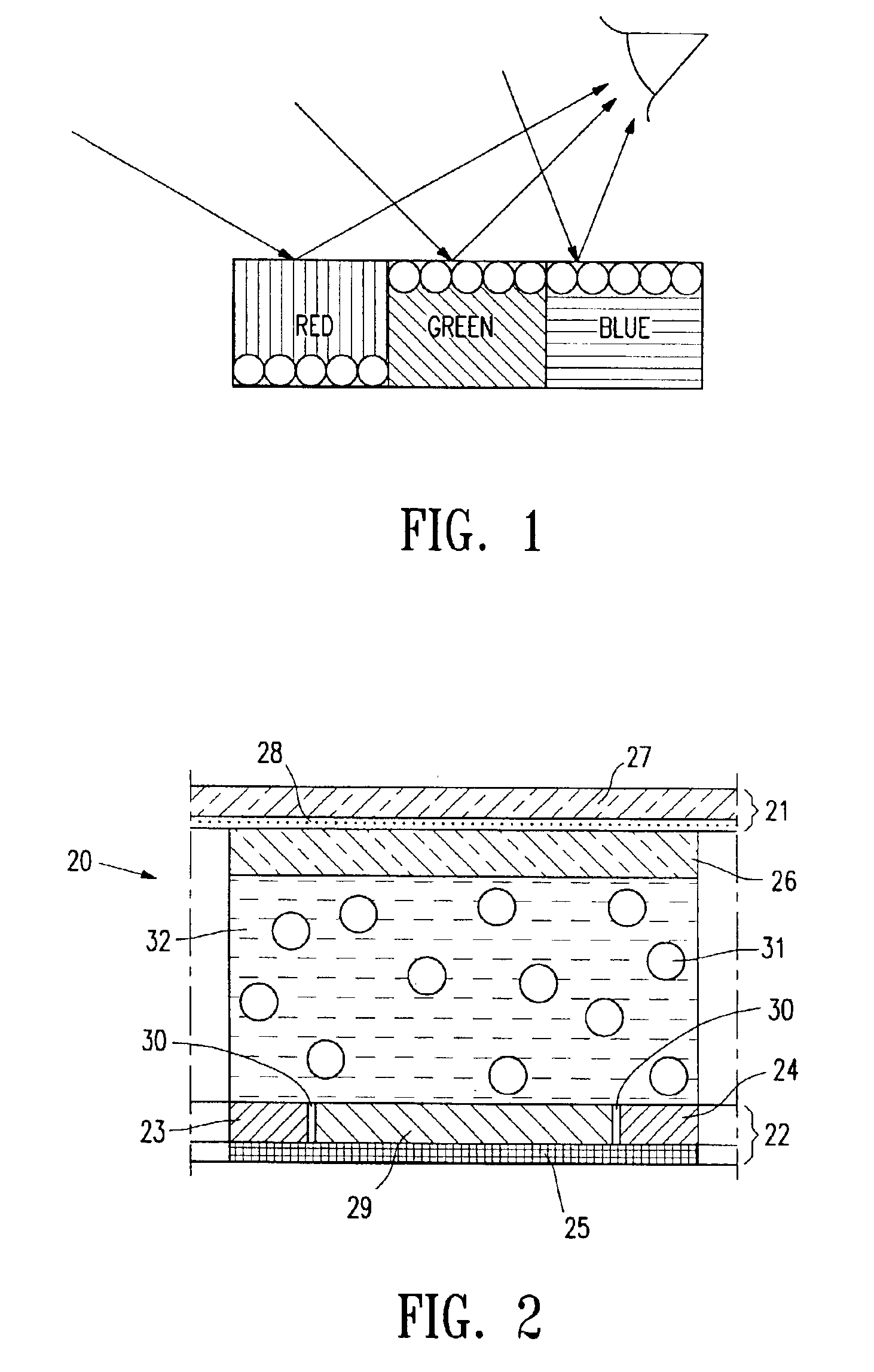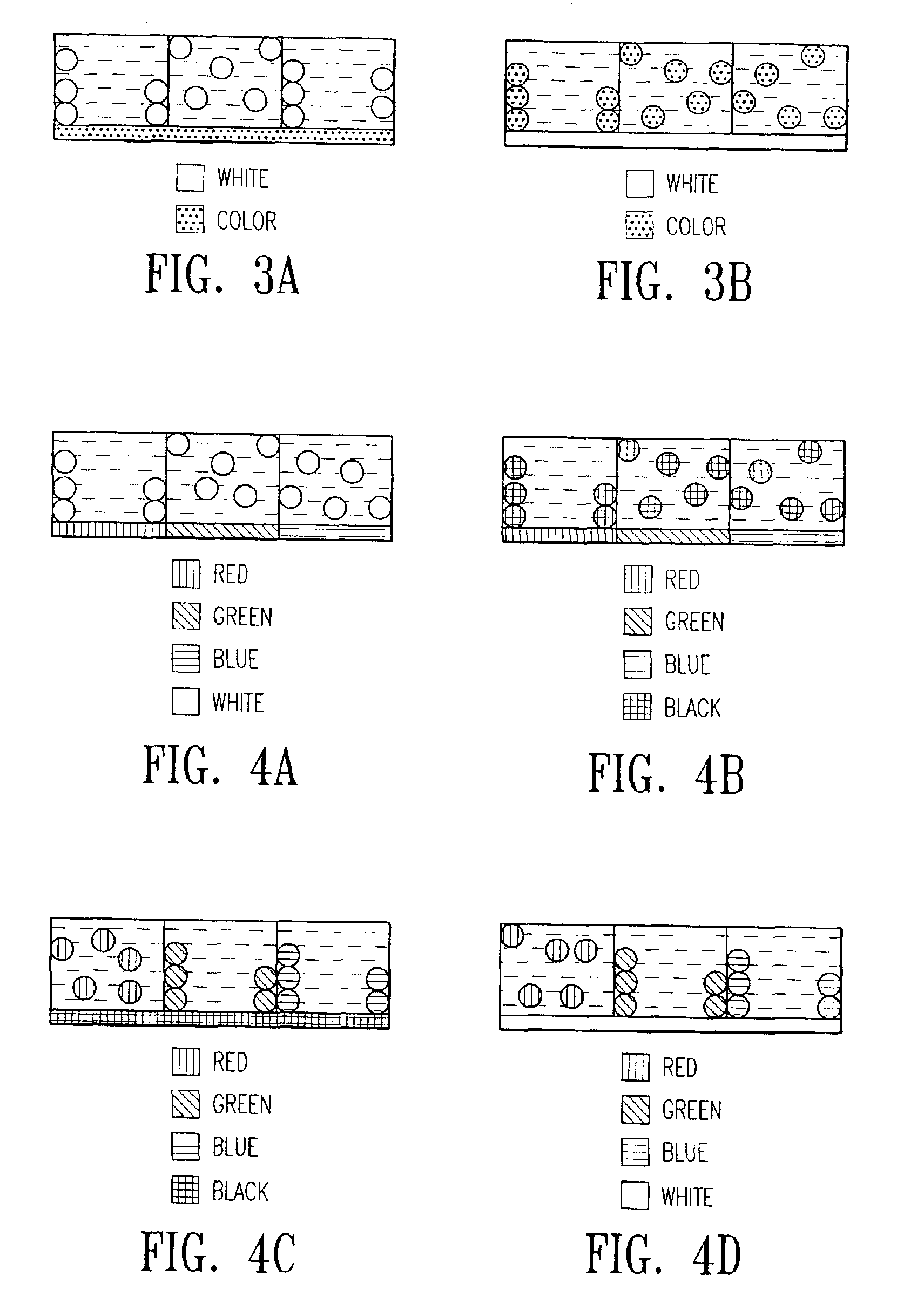Electrophoretic display with in-plane switching
a technology of in-plane switching and electrophoretic display, which is applied in the field of electrophoretic display with in-plane switching, can solve the problems of inability to achieve the formation of partitions, difficulty in and high power consumption of backlight and color filter used in this device, so as to achieve the effect of improving color saturation and contrast ratio
- Summary
- Abstract
- Description
- Claims
- Application Information
AI Technical Summary
Benefits of technology
Problems solved by technology
Method used
Image
Examples
Embodiment Construction
[0022]Unless defined otherwise in this specification, all technical terms are used herein according to their conventional definitions as they are commonly used and understood by those of ordinary skill in the art. The terms “cell”, “microcup”, “well-defined”, “aspect ratio”, and “imagewise exposure” are as defined in the co-pending applications identified above.
[0023]The term “isolated” refers to the electrophoretic cells which are individually sealed and the fluid in the cells may not be transferred from one cell to the other cells.
I. The Disadvantages of Electrophoretic Display with the Traditional Top / Bottom Switching
[0024]The EPD of FIG. 1 has conventional top / bottom electrode switching mode. The cells are filled with a suspension in which white charged particles are dispersed in a colored (red, green and blue) dielectric solvent. All three cells in FIG. 1 are shown charged with a voltage difference between the top and bottom electrodes (not shown). In the green and blue cells, ...
PUM
| Property | Measurement | Unit |
|---|---|---|
| depth | aaaaa | aaaaa |
| depth | aaaaa | aaaaa |
| mean particle size | aaaaa | aaaaa |
Abstract
Description
Claims
Application Information
 Login to View More
Login to View More - R&D
- Intellectual Property
- Life Sciences
- Materials
- Tech Scout
- Unparalleled Data Quality
- Higher Quality Content
- 60% Fewer Hallucinations
Browse by: Latest US Patents, China's latest patents, Technical Efficacy Thesaurus, Application Domain, Technology Topic, Popular Technical Reports.
© 2025 PatSnap. All rights reserved.Legal|Privacy policy|Modern Slavery Act Transparency Statement|Sitemap|About US| Contact US: help@patsnap.com



